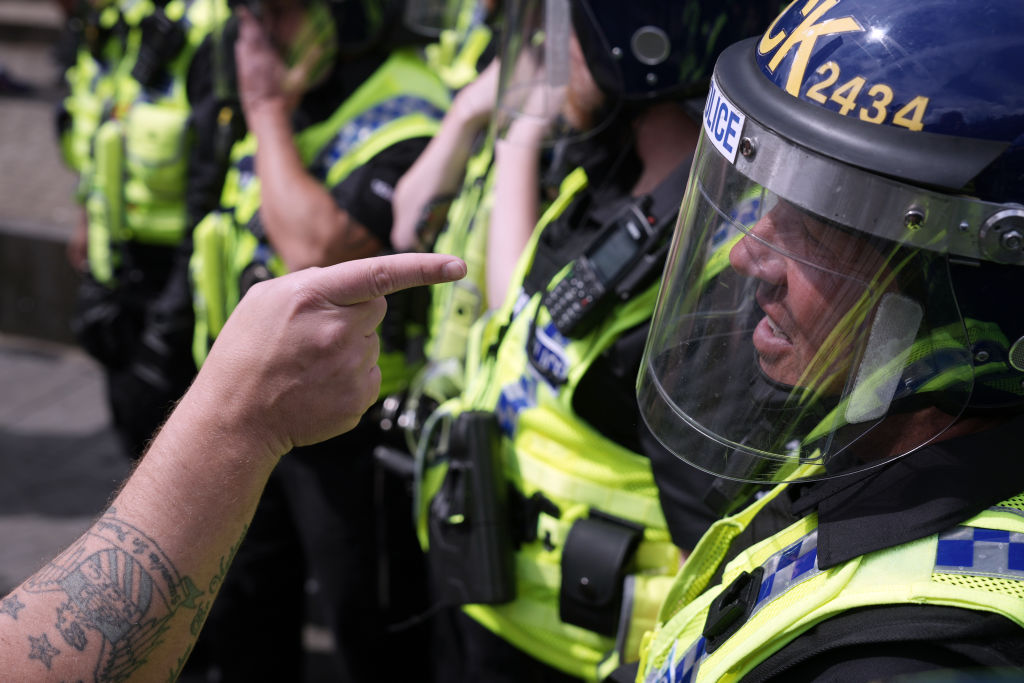The last comparable period of civil disorder in this country happened in 2011. Then as now, the courts acted with speed and severity to try to quell five days of rioting in multiple locations, which traumatised the nation, caused hundreds of millions in damage and injured more than three hundred officers. The head of the Crown Prosecution Service at the time was one Keir Starmer. Now, as prime minister, he seeks again to confront the horrific street violence with the same apparent energy and determination. But can a punitive response work to stop violence that has at times threatened to overwhelm the police? Times have changed, and our criminal justice system is in tatters.
Sending a large number of new offenders into a system in meltdown, even if spaces can be found, looks fraught with risk
Back in 2011, courts worked overtime and overnight to arrest and process offenders. Curiously, the Home Secretary has admitted this morning that this has not yet happened. More than 3,000 people were arrested, and nearly 2,000 of those appeared in magistrates’ courts for initial hearings. The normal rate of remand of 10 per cent shot up to 65 per cent in the case of rioters, and social media is full of stories of solicitors remembering conversations with stunned clients who were not only immediately deprived of their liberty for even minor related crimes such as theft through looting but who went on to receive an average sentence of nearly seventeen months and much longer for those convicted of riot.
Few people would argue against the people rioting, whom the Prime Minister again described yesterday as ‘far-right thugs’, facing severe punishment. Their behaviour has shamed the country and put people in fear for their lives. It has driven police, already dealing with huge levels of risk in the community, away from core business and stuck them behind shields with tactics that have resulted in dozens of injuries. But there are some very serious practicalities that challenge the tough rhetoric of retribution. In the next week, police will scoop up large numbers of people who could not be detained immediately but have been caught through evidence gathering.
The first challenge is space. Back in 2011, there was significantly more headroom in our prisons to cope with a surge of remanded offenders. Austerity had not yet completed its ruinous assault on the prison service ranks, so there were the numbers of frontline officers and crucially the experience to manage this new and potentially destabilising influx. Even so, prison unions were sounding the alarm about the impact on stability and regimes a surge of remanded or sentenced rioters would have. Today’s service is at crisis point, with the system running red-hot on occupancy of 99 per cent for months. Assaults on staff and some types of self-harm are at record levels. There have been repeated high-profile security failures, and in some jails, discipline has all but broken down. Prisons are awash with drugs and illicit mobile phones.
Sending a large number of new offenders into a system in meltdown, even if spaces can be found, looks fraught with risk. It is deeply ironic that police custody suites that are now or soon will be heaving with rioters have been essentially double-booked through ‘Operation Safeguard, which has reserved places for prisoners when jail space runs out. Moreover, the new reduced sentencing rules may mean that justice for people who have caused huge public outrage and harm may not amount to much more than catch and release. In 2011, the sentences handed down were in the interests of justice. In 2024, justice will contend with cell space for primacy in the minds of judges.
About a quarter of those who rioted in 2011 had been to prison before. It’s reasonable to infer that for the other 75 per cent who transitioned rapidly from street corner to prison, it was a salutary lesson. The deterrent effect of prison for rioting is arguably more effective than for other forms of crime. I don’t think it’s a coincidence that the sort of civil unrest that is common to many countries in Europe – France is a prime example – is much rarer here. But that rarity is guaranteed by a complex foundation which has far more to do with legitimacy than how many cells we have.
The things that constrain the horrendous behaviour of individuals who should now be packing for prison seem to be under sustained assault right now. How we behave to one another in real life is undermined by lurid and seductive explanations for our country’s ills online. The places and spaces for civil discourse are drying up. This latest spasm of violent disorder started after the brutal slaying of children at a dance class. But the origins go back further and deeper. If it can – and somehow it must – the state has to halt the criminal impunity that threatens to tear our social fabric apart. We should stand fully behind Keir Starmer in that task with no equivocation. But rioting, like terrorism, is, in a fundamental sense, a conversation. When the dust settles, we need to understand what is being said and what sort of response is required to keep our country safe from sectarian hatred.
Hear Ian’s analysis on Coffee House Shots:








Comments